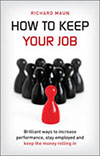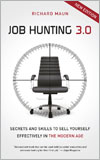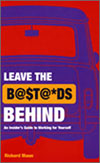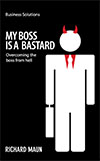better business blog
Tips and stories to add value to you and your organisation

Leadership Through Paper
Good process leads to great outcomes and I do love a simple process. It is possible to over-complicate a process and add extra layers of administration, in a well-intentioned and ultimately doomed attempt to reduce risk.
Interestingly, in the world of safety there is a concept called risk-homeostasis. What this means is that the safer we make something, the more people take risks, which can cause more accidents, which means the risk level can return to a defined centre point. If this sounds a bit odd, think about cars. When ABS was first fitted to executive cars, research found that accidents went up, because drivers felt safer and so took more risks. If we removed the brakes from all cars (similar to driving in snow) we would make cars more dangerous, but would all tiptoe along and so greatly reduce the risk of an accident. Any bumps would tend to be small and the risk of injury therefore would become greatly reduced.
So it is with processes. If we keep them simple, they are more likely to be used. They may have some imperfections, but that is generally preferable to a complicated multi-step process that people end up ignoring, through process-fatigue.
When it comes to leadership we can absorb complicated models, draft multi-layered organisational trees and deliver astonishingly long-winded (and total time-wasting) PowerPoint presentations. None of this apparent cleverness will change behaviour, unless the behaviour we want to change to is encourage drowsiness amongst our colleagues.
Paper is the answer. Paper doesn’t require a good Wi-Fi connection, is resistant to hacking and never takes itself offline for an infuriatingly badly timed upgrade.
To work effectively when setting tasks, identifying development points and following up with colleagues a simple tip is to use a one-page form. We can add boxes for tasks, due dates, long term issues, attitude and so on. We can have one form for each member of our team and all we have to do is fill it in during 1-to-1 sessions and give our colleague a copy.
This might sound a bit over-simplistic, but the nudge here is to remember that good leadership is about simple and effective communications …and constant typing into a smartphone can get in the way of that. In addition, by writing it down, we take responsibility for managing our team, in a tangible way, instead of just talking at them.
Paper also is part of the ‘theatre of leadership’ whereby we project an air of serious efficiency, which means that our colleagues are more likely to complete their tasks …knowing that we have them clearly written down for future review.
So, this week, we can all have fun creating simple forms to enable us to be better leaders. Despite the widely held view that paper is an old fashioned relic of the past, it refuses to leave the office and take up genteel retirement. Let’s hear it for paper!
Next week: Invisible Theft
e-publishing
Click icon for details


recent posts
browse archive
books
Click cover to view details on Amazon

How to Keep Your Job
Brilliant ways to increase performance, stay employed and keep the money rolling in
Published 2011 Marshall Cavendish
208pp

Job Hunting 3.0
Secrets and skills to sell yourself effectively in the Modern Age
Published 2010 Marshall Cavendish
260pp

 RSS
RSS


